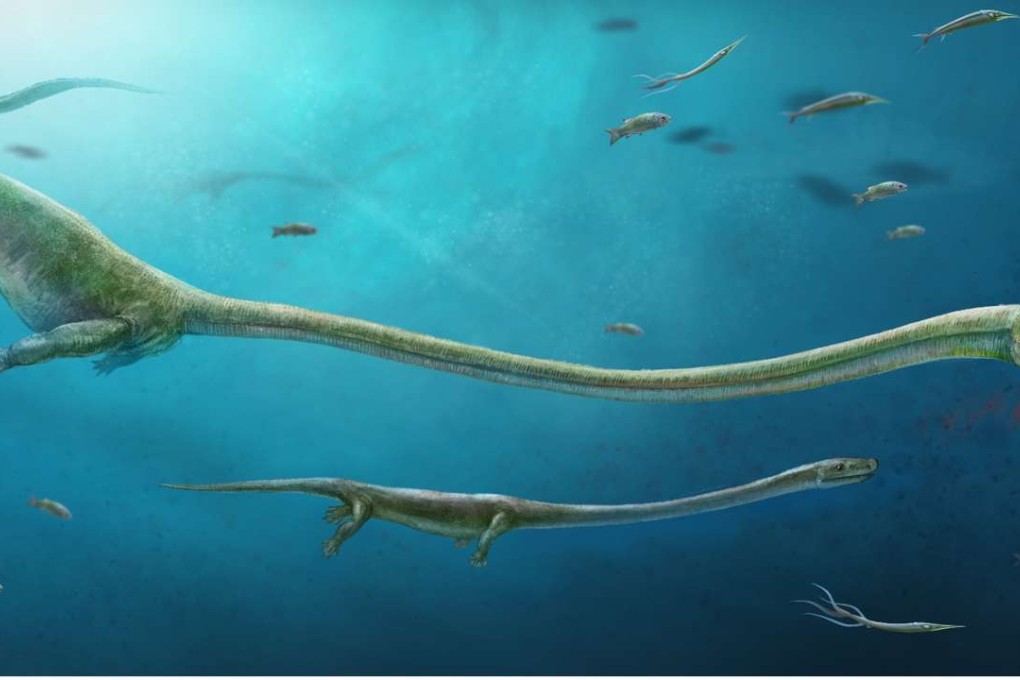Chinese fossil ‘rewrites history of reproduction’
First evidence found that group of animals that includes dinosaurs and birds also gave live birth to babies rather than only laying eggs

A fossil found in China has provided the first evidence that a group of animals that includes dinosaurs, birds and crocodiles also gave live birth to babies rather than only laying eggs to produce offspring.
The remains of a baby were found inside the fossil of a marine reptile called a Dinocephalosaurus discovered about 100km from Kunming in Yunnan province in southwest China.
The 245-million-year-old fossil belongs to a class of animals called Archosauromorpha, which include birds and some reptiles.
It was previously thought the group only laid eggs to produce offspring, but the find questions this assumption.
“Our discovery calls for a rethink of the evolutionary history of reproduction,” said Dr Liu Jun, a palaeontologist at the Hefei University of Technology in Anhui province and the lead scientist on the multinational research.
“Further evolutionary analysis reveals the first case of live birth in such a wide group containing birds, crocodilians, dinosaurs and pterosaurs among others, and pushes back evidence of reproductive biology in the group by 50 million years.”